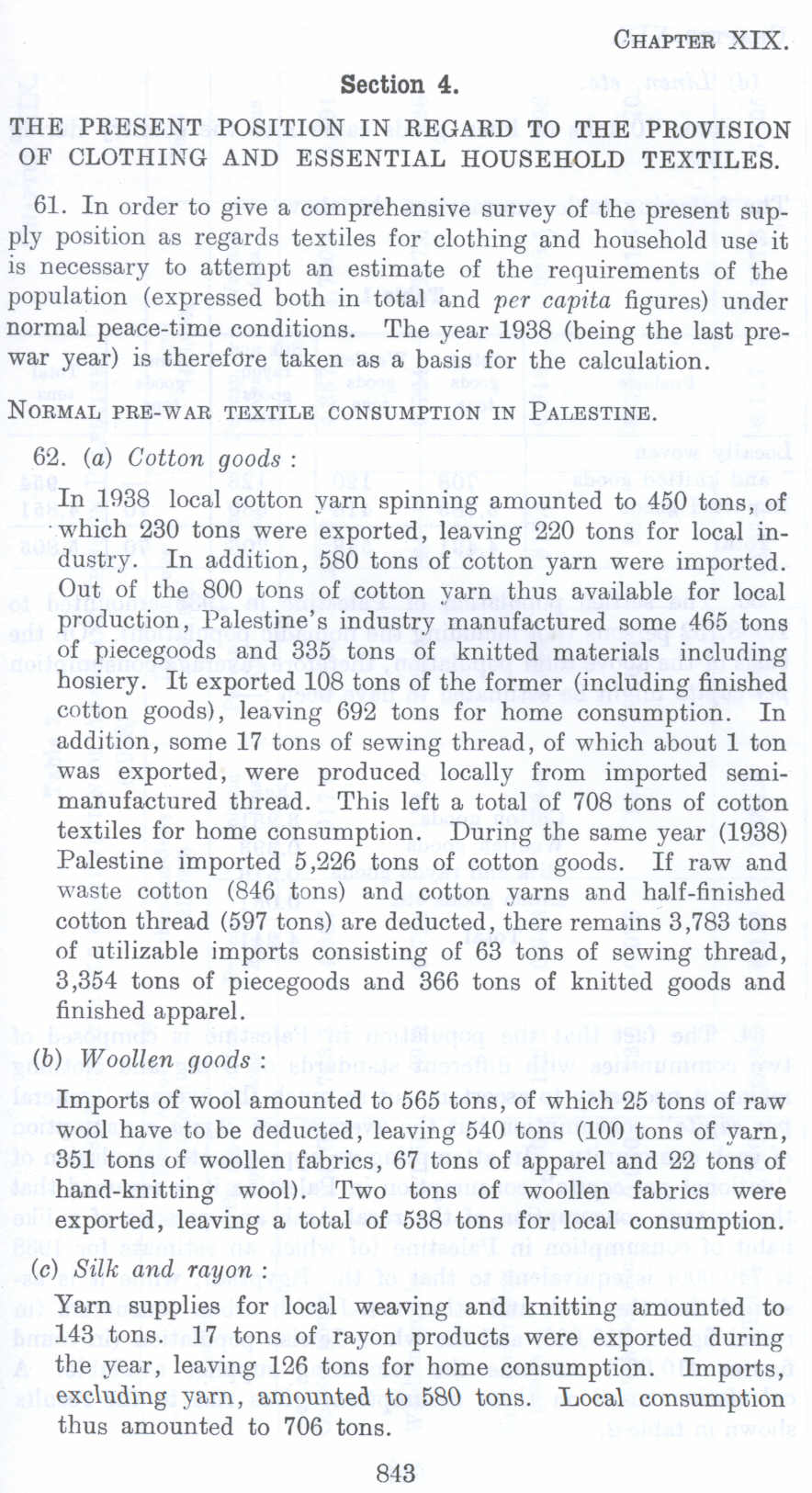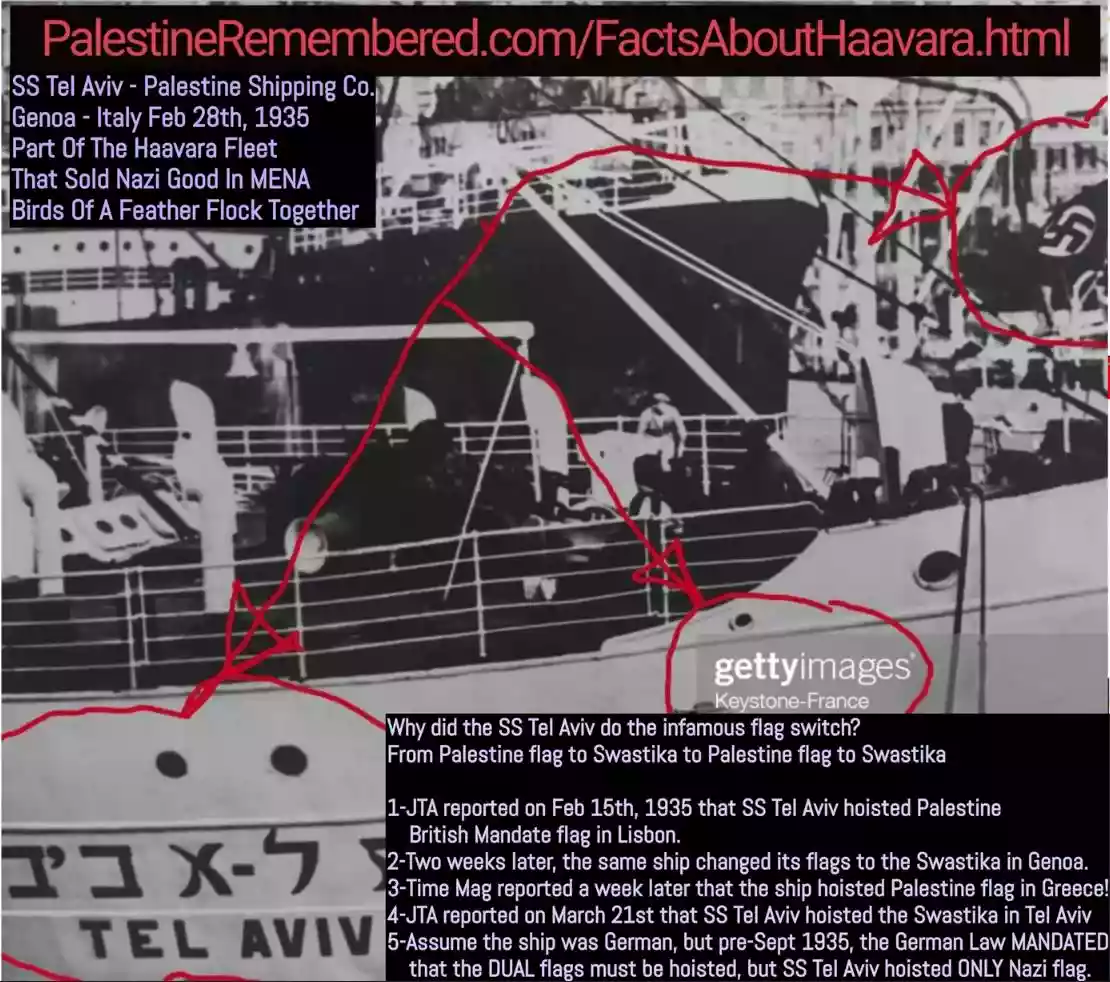| Prev | Next |  |
| Prev | Next |
| PalestineRemembered | About Us | Oral History | العربية | |
| Pictures | Zionist FAQs | Haavara | Maps | |
| Search |
| Camps |
| Districts |
| Acre |
| Baysan |
| Beersheba |
| Bethlehem |
| Gaza |
| Haifa |
| Hebron |
| Jaffa |
| Jericho |
| Jerusalem |
| Jinin |
| Nablus |
| Nazareth |
| Ramallah |
| al-Ramla |
| Safad |
| Tiberias |
| Tulkarm |
| Donate |
| Contact |
| Profile |
| Videos |
The Present Position in Regard to The Provision of Clothing and Essential Household Textiles in Palestine before 1948 (Nakba), British Mandate: A Survey of Palestine: Volume II - Page 843. Chapter XIX: Food And Clothing : Section 4 |
Disclaimer
The above documents, article, interviews, movies, podcasts, or stories reflects solely the research and opinions of its authors. PalestineRemembered.com makes its best effort to validate its contents.


Post Your Comment
*It should be NOTED that your email address won't be shared, and all communications between members will be routed via the website's mail server.
Section 4.
THE PRESENT POSITION IN REGARD TO THE PROVISION OF CLOTHING AND ESSENTIAL HOUSEHOLD TEXTILES.
61. In order to give a comprehensive survey of the present supply position as regards textiles for clothing and household use it is necessary to attempt an estimate of the requirements of the population (expressed both in total and per capita figures) under normal peace-time conditions. The year 1938 (being the last prewar year) is therefore taken as a basis for the calculation.
NORMAL PRE-WAR TEXTILE CONSUMPTION IN PALESTINE.
62. (a) Cotton goods :
In 1938 local cotton yarn spinning amounted to 450 tons, of •which 230 tons were exported, leaving 220 tons for local industry. In addition, 580 tons of cotton yarn were imported. Out of the 800 tons of cotton yarn thus available for local production, Palestine's industry .,manufactured some 465 tons of piece goods and 335 tons of knitted materials including hosiery, It exported 108 tons of the former (including finished cotton goods), leaving 692 tons for home consumption. In addition, some 17 tons of sewing thread, of which about 1 ton was exported, were produced locally from imported semimanufactured thread. This left a total of 708 tons of cotton textiles for borne consumption. During the same year (1938) Palestine imported 5 ,226 tons of cotton goods. If raw and waste cotton (846 tons) and cotton yarns and half-finished cotton thread (597 tons) are deducted, there remains 3,783 tons of utilizable imports consisting of 63 tons of sewing thread, 3 ,354 tons of piece goods and 366 tons of knitted goods and finished apparel.
(b) Woollen goods:
Imports of wool amounted to 565 tons, of which 25 tons of raw wool have to be deducted, leaving 540 tons (100 tons of yarn, 351 tons of woolen fabrics, 67 tons of apparel and 22 tons of band-knitting wool). Two tons of woollen fabrics were exported, leaving a total of 538 tons for local consumption.
(c) Silk and rayon :
Yarn supplies for local weaving and knitting amounted to 143 tons. 17 tons of rayon products were exported during the year, leaving 126 tons for home consumption. Imports, excluding yarn, amounted to 580 tons. Local consumption thus amounted to 706 tons.
843